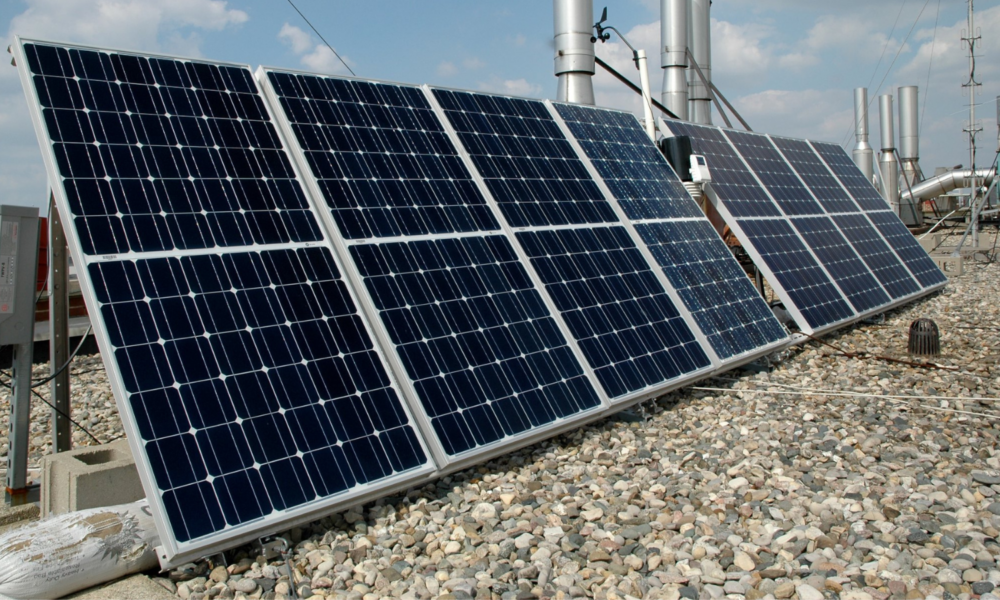This week, the Midwest’s regional electric grid operators approved nearly $10.5 billion of critical transmission line upgrades across the region, including in Illinois. These investments will bring more clean energy online, improve grid resiliency, and deliver significant consumer benefits and jobs.
As Illinoisans face higher prices due to a power supply crunch and increased risks of controlled blackouts, cost-saving grid improvements can’t come soon enough.
The Midcontinent Independent System Operator—known as MISO—is responsible for managing the regional power market and ensuring the grid is reliable (the lights stay on) and resilient (can withstand and recover from challenges posed by power plant outages, severe weather, and more). Unfortunately, MISO failed to plan ahead and address longstanding issues due to more retirements of uneconomic coal plants—sticking Illinois ratepayers like Ameren customers with the bill.
After years of inaction, MISO’s approval of Tranche 1, a portfolio of much-needed grid fixes, represents the first step toward building a more reliable, renewable, and affordable power system—as well as providing major economic benefits to Midwest ratepayers.
Grid improvements more than pay for themselves
In Illinois alone, MISO estimates that the Tranche 1 portfolio of projects will create between $3.8 and $5.5 billion in benefits compared to a cost responsibility of just $1.4 billion. This means that for every dollar spent by Illinoisans on these projects, they will receive between $2.80 and $4.00 in benefits. These estimates come from quantifying the benefits of a more efficient grid that enables lower cost energy, greater system resilience, and more rapid decarbonization. Allowing for more cheap renewable energy to meet demand, and addressing areas where the grid is vulnerable will provide fuel savings, avoided risk of controlled blackouts, and reductions in fossil fuel pollution.
According to Clean Grid Alliance, these projects will also enable more than 7,800 MW of new renewable energy resources developed in the state. This development will create almost 32,000 jobs while providing enough energy to power more than 1.8 million homes.
Transmission updates and clean energy are long-term solutions
This June, electricity bills more than doubled across central and southern Illinois—creating huge energy costs as downstate communities grapple with extreme heat, inflation, and rising costs of fuel for heating and transportation. These price spikes—which MISO experts have worried about for a decade—are due in part to an outdated grid that poses system reliability issues and prevents cheaper wind and solar energy from powering Illinois homes.
MISO’s Tranche 1 projects crossing Iowa, Illinois, Indiana, and Michigan will improve reliability of the regional grid, addressing 19 “thermal overloads”—or spots on transmission lines where they can become overly warm and potentially fail from too much electricity on the line at one time—in Missouri and Illinois alone. Preventing the grid from being overloaded during times of high demand reduces the risk of temporary, controlled outages. Additionally, being able to send electricity from where it’s produced to where it’s needed is critical for avoiding the kinds of brownouts that faced Ameren customers during the 2021 polar vortex.

A ‘close up’ of new transmission projects coming through Illinois. Source: MISO LRTP Tranche 1 Report Overview
Building a grid that enables increased renewable energy capacity will help ensure utilities have sufficient resources to provide enough electricity even when demand is high. The capacity shortfall driving increased electricity bills and increased risk of brownouts in Illinois is smaller than the amount by Illinois wind and solar projects that have been waiting for MISO approval to connect to the grid. The Tranche 1 upgrades will reduce congestion of the power system and enable more renewable electricity to access the grid—such as the 34 Illinois solar and wind projects in the MISO queue capable of generating more than 6,000 megawatts of energy, enough to power 4.5 million homes.
More MISO action is needed to decarbonize Illinois’ power sector
While the Tranche 1 projects are a strong first step, MISO needs to do much more, much faster, to facilitate a transformation of the regional grid that matches the pace of Illinois’ renewable energy transformation driven by the Climate and Equitable Jobs Act (CEJA) passed in September 2021.
Illinois has its work cut out for it to build the amount of wind and solar needed to replace polluting coal and gas plants that are harming public health and driving catastrophic climate impacts. We can’t afford to be held back by a grid that leaves capacity “stranded” in one place when there’s a shortage in another. Investments like the Tranche 1 projects are crucial for building a power system that is flexible and reliable in the face of extreme heat or strong storms. It’s also only the tip of the iceberg of what MISO needs to do to ensure accelerating amounts of renewable energy can connect to the grid and help Illinois meet its goal to phase out all fossil fuel power plants by 2045.
Last week, the Illinois Commerce Commission approved a renewable energy procurement plan designed to enable the state to reach its goals of meeting 40 percent of electricity demand with renewable energy by 2030. CEJA has supported almost 1000 megawatts of new utility-scale renewable energy projects so far, including through the Coal-to-Solar and Energy Storage program. Illinois legislators and policymakers must continue to push MISO to match the ambition of CEJA and create a modernized grid that is compatible with the amount of renewable electricity needed to replace dirty, expensive fossil fuels.

